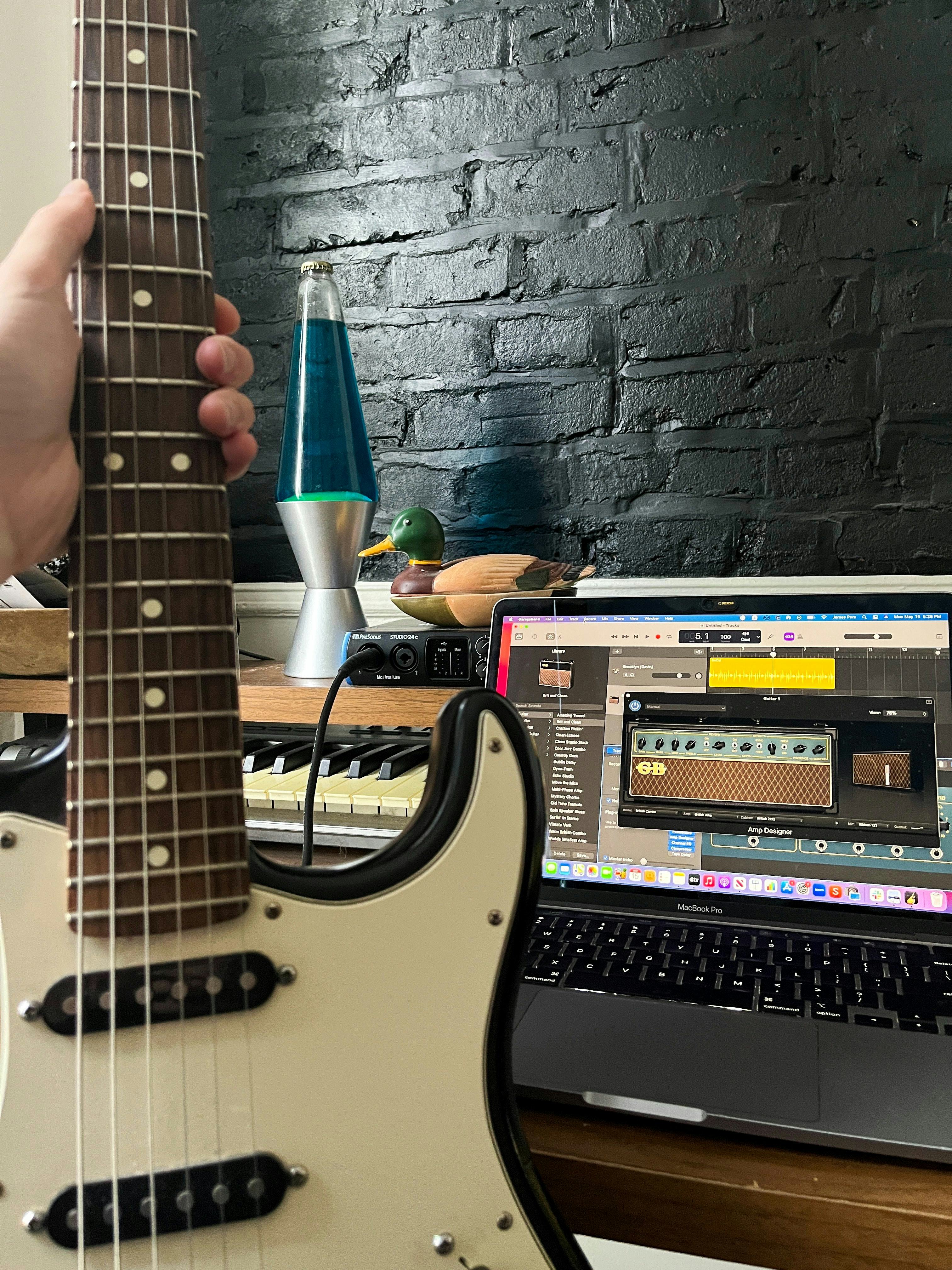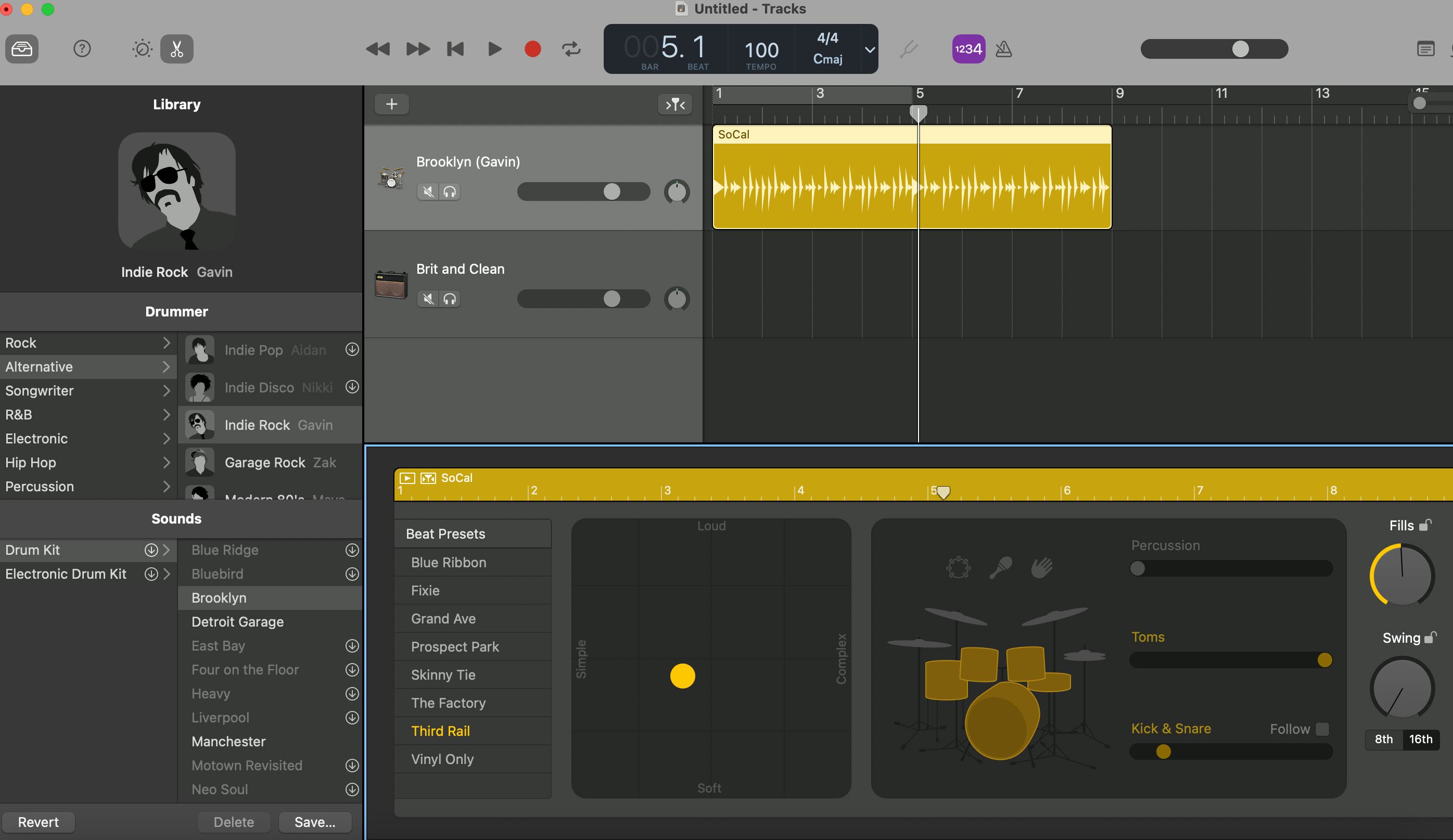
I still remember the first song I made with GarageBand.
It was what real heads in the music-making biz call... utter garbage. That’s to say it was redundant, unoriginal, incomplete, and not at all ready to be released unto the world. But more important than its quality, was another, more meta factor: it existed.
It had pre-recorded drums (shout out to Apple Loops); it had a real direct-in guitar with digital distortion; and naturally a guitar solo. It had life and form. It was an idea that I — an angsty teenager with too few friends and too little confidence to start a band — could listen back to. It gave my amateur artistry shape. It was, for me at the time, an Apple-made music revolution.
As I moved beyond my teenage angst, I naturally moved on from GarageBand as well, transitioning to other digital audio workstations — Fruity Loops (later FL Studio) and then to Reason and eventually Logic. But when I decided this year to start recording music again, I went back to my roots; back to my parents’ basement; back to GarageBand. And let me tell you, I was shocked to discover what exists inside that guitar-shaped icon today.
Not Your Parents’ Garage
The last major update (not counting minor bug fixes) to GarageBand for the Mac was in 2013, but you wouldn’t know it when you fire up Apple’s iconic DAW, short for Digital Audio Workstation. Inside, the interface is as simple as it’s always been — a kind of modular and rectangular consensus of how any modern music production software should look.
But once you start peeling back layers of the GarageBand onion, you begin to see just how much functionality is hidden in that simple form.
You, of course, have the ability to slot in live sounds recorded through a microphone, or you can go direct-in with an instrument of your choice. For the latter, I connect my guitar via 1/4-inch cable to a PreSonus Studio 24c audio interface that links to my MacBook Pro through USB.

And then you’ve got a fairly generous array of software instruments, which — as a snob of VSTs and synths myself — aren’t the best, most original, digital instruments in the world, but have improved over the years to deliver something close to serviceable. And automation! Never discount the beauty of being able to automate volume for track fade-ins and fade-outs.
One very notable change — if you haven’t used GarageBand in a while like me — is the inclusion of one of Logic’s best features, the virtual drummer. Anyone recording rock music knows that tracking drums can be a herculean task. And if, like me, you’re just demoing tracks that you intend to record with more professionalism later on, finding a drummer and then recording those drums in a way that doesn’t suck is a tall order.
The best part about GarageBand’s virtual drummer is that the convenience doesn’t necessarily come at the cost of quality or customization. Instead of the old-school Apple Loop style of dragging and dropping your drums into a track and having to deal with whatever the pre-recorded loop throws (or doesn’t throw) your way, GarageBand’s virtual drummer lets you select a wide variety of parameters.
Options to tweak your drums include selecting a style/genre you want your drummer to play in (think “alternative” or “hip-hop”) and even get as granular as sub-genre (think “Indie Rock” or “Garage Rock.”)

From there, you can subtly tweak your drums further with an adjustable matrix if you’re not satisfied with the first iteration. Sliding the dot inside the matrix (a rectangular grid) adjusts the four parameters — simple, soft, complex, and loud — and allows you to hear in real-time how your tweaks are shifting what your virtual drummer plays.
Maybe you’re a talented percussionist who doesn’t need GarageBand’s virtual drummer telling you what to do, but if you’re me — a helpless guitarist who just knows what he wants to hear — then the sophisticated hand-holding is basically a godsend.
And it’s not all about drumming. For all the guitarists out there, GarageBand in its current form offers a more than healthy array of amp simulators that bring your direct-in guitar or bass to life. And like GarageBand’s virtual drummer, the DAW’s Amp Designer plugin allows a shocking degree of granularity, letting musicians choose their model, amp, and cabinet and (naturally) letting them pull open their given stack and fine-adjust things like gain, bass, treble, reverb and more.
I don’t think Radiohead is going to be tracking guitars with GarageBand anytime soon, but with a little know-how (i.e. double-tracking your guitars and panning to the left and right) GarageBand’s amp sims make for an elevated bordering-on-pro-sounding demo. It’s simple; it’s effective; it’s GarageBand all grown up.
So Much, So Free
Since I’ve said so many nice things about GarageBand, let me clarify for a moment: GarageBand is not a professional-level DAW. If you’re a pro sound engineer, you don’t need me of all people to tell you that Pro Tools is still, for the foreseeable future, the industry standard.
But if you’re not a pro, GarageBand has a lot going for it, and even if it’s not quite at the level of sophistication you want to record your music, it’s impossible not to admire as a piece of (technically) free software that comes on basically every Mac (and iPhone and iPad if that’s your flavor) you can buy today.
When Apple introduced GarageBand in 2004, the novelty of being able to flip open an Apple laptop and funnel your musical ambitions into a simple but effective DAW was pretty groundbreaking.
And yeah, maybe we’ve lost some of that whimsy along the way, or maybe Apple lost it for us, but when you want a way to channel your inner angsty teen like me, just know that while we were growing up, GarageBand grew up with us, and your music will be better of for it.







